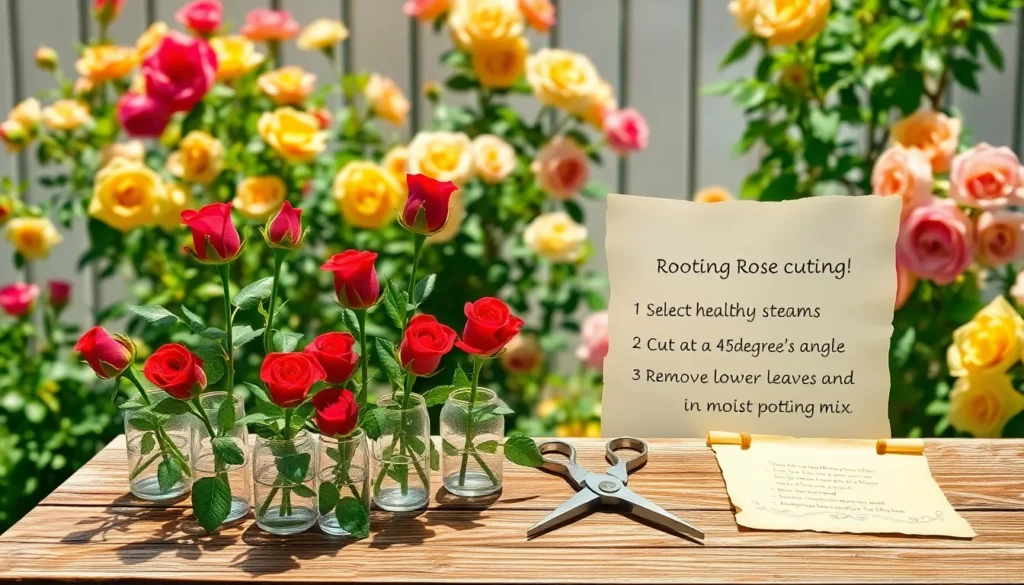Roses have long been the crowning jewels of gardens, captivating both the novice and seasoned gardener with their timeless beauty and enchanting aroma. Growing roses from cuttings offers not just a rewarding experience but also a cost-effective way to expand your garden’s floral horizons. Whether you’re just starting to dip your toes into the world of gardening or you’re a seasoned green thumb looking to try something new, this method promises to be both accessible and gratifying.
Embarking on the journey of propagating roses from cuttings allows you to cultivate a deeper connection with your garden. This article will guide you through each step, from selecting the perfect stem to nurturing it into a thriving plant, ensuring that your efforts bloom into a stunning success. You’ll learn the nuances of timing, the best tools and techniques, and the secrets to creating the ideal environment for your cuttings to root and flourish.
While the idea of growing roses from cuttings might seem daunting at first, you’ll soon discover that it’s a delightful process where patience and care yield magnificent results. As you delve into the art and science of rose propagation, you’ll not only gain practical skills but also an appreciation for the resilience and elegance of these beloved blooms. With our guidance, even the smallest corner of your garden can transform into a vibrant tapestry of color and scent, offering endless joy and satisfaction.
Select Healthy Rose Cuttings
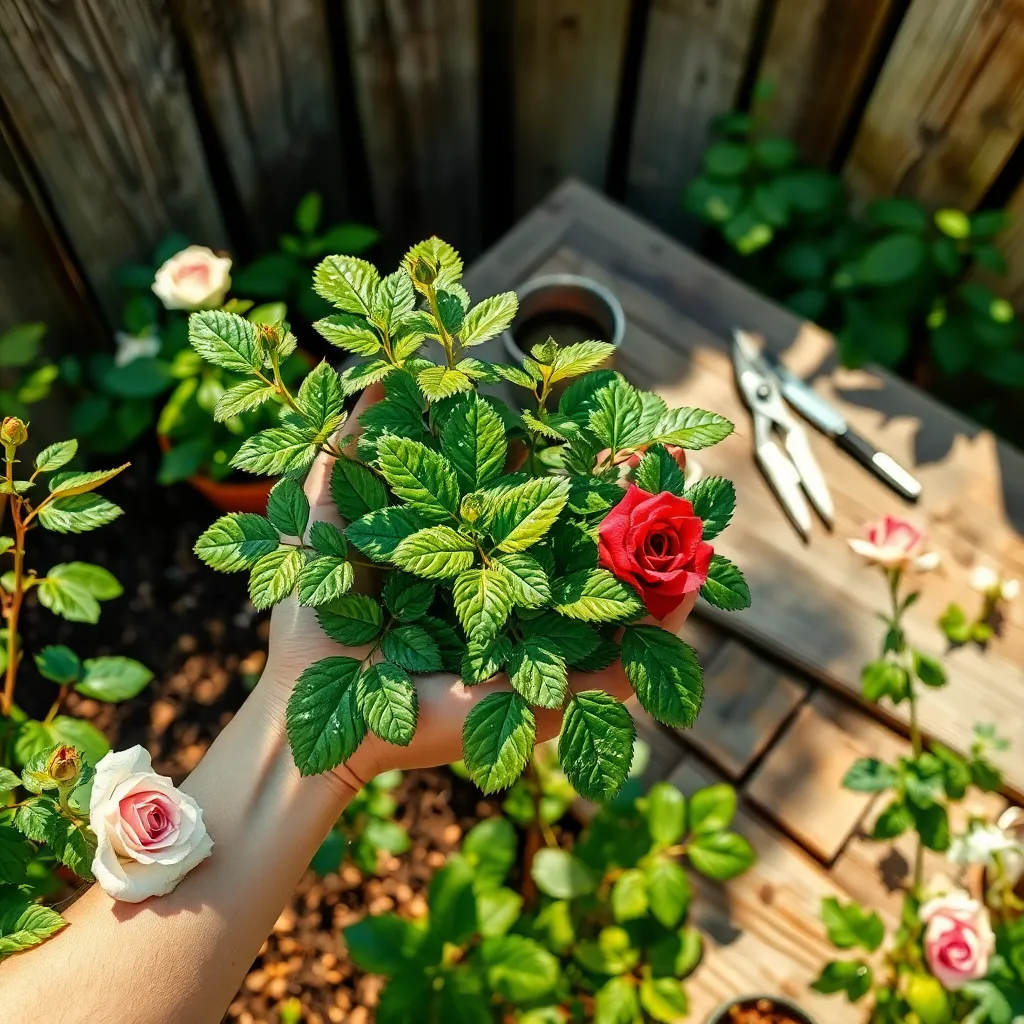
When selecting rose cuttings, aim to choose stems that are healthy and disease-free. Look for stems that are approximately 6 to 8 inches long and have a diameter similar to a pencil.
It’s crucial to pick stems from the current season’s growth, as they root more effectively. Ensure the cutting has at least three leaf nodes, which will aid in root development.
Early morning is the best time to take cuttings, as the plant is hydrated and less stressed. Use a pair of sharp, sterilized pruners to make a clean cut just below a node.
For optimal results, consider dipping the cut end in a rooting hormone powder to encourage root growth. Plant the cutting in a pot filled with a well-draining mix of half perlite and half peat moss to support healthy root development.
Prepare the Planting Medium
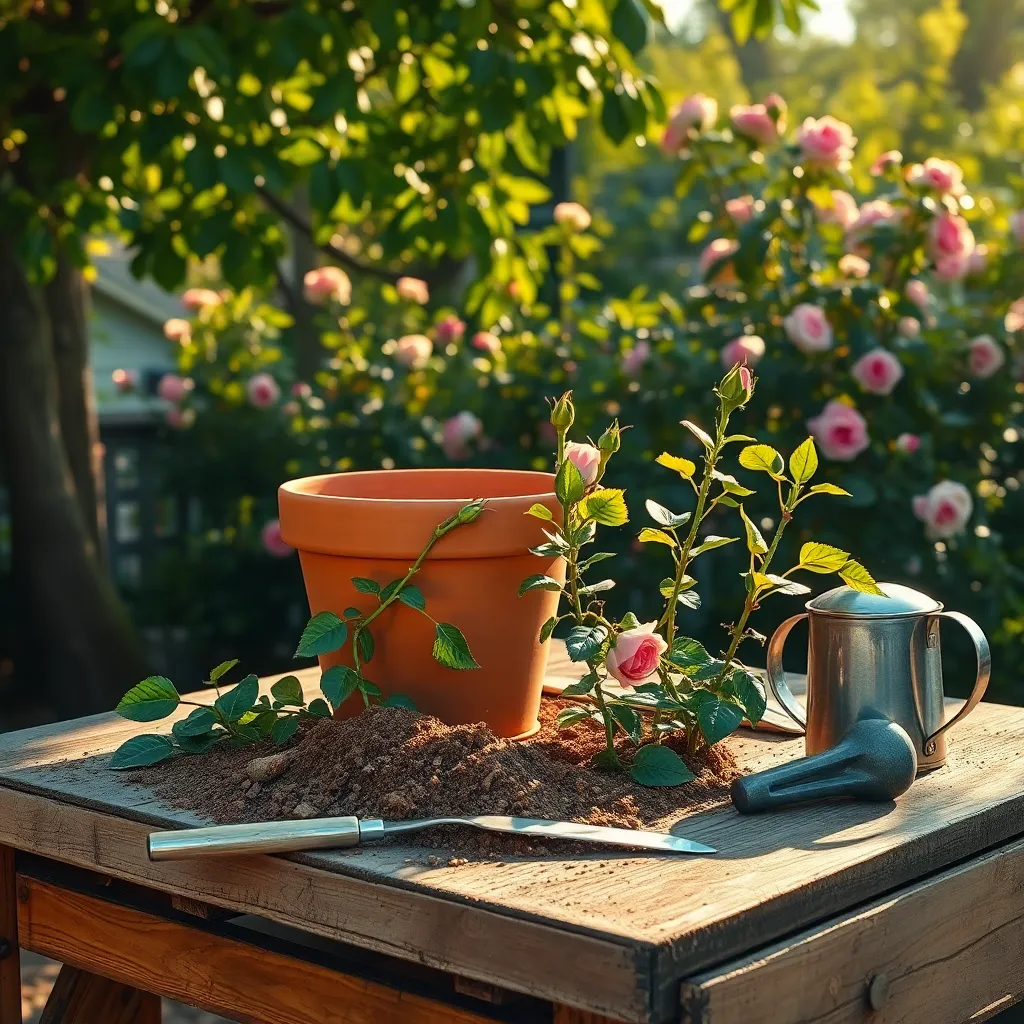
To grow roses successfully from cuttings, it is crucial to prepare the right planting medium. Begin by selecting a well-draining soil mix, such as a blend of equal parts perlite and peat moss, which provides a balanced environment for root development.
Choose a container with adequate drainage holes to prevent waterlogging, which can be detrimental to cuttings. A small pot, about 4 inches in diameter, is ideal for individual cuttings as it allows easy handling and monitoring of growth.
Once you’ve selected your container, fill it with the prepared soil mix, leaving a little space at the top for watering. Lightly moisten the soil before planting to create a welcoming environment for the cuttings.
For best results, consider adding a small amount of rooting hormone to the base of each cutting before planting. This step can significantly increase the chances of successful root development, especially for beginners looking to improve their gardening success rate.
Trim and Dip in Rooting Hormone
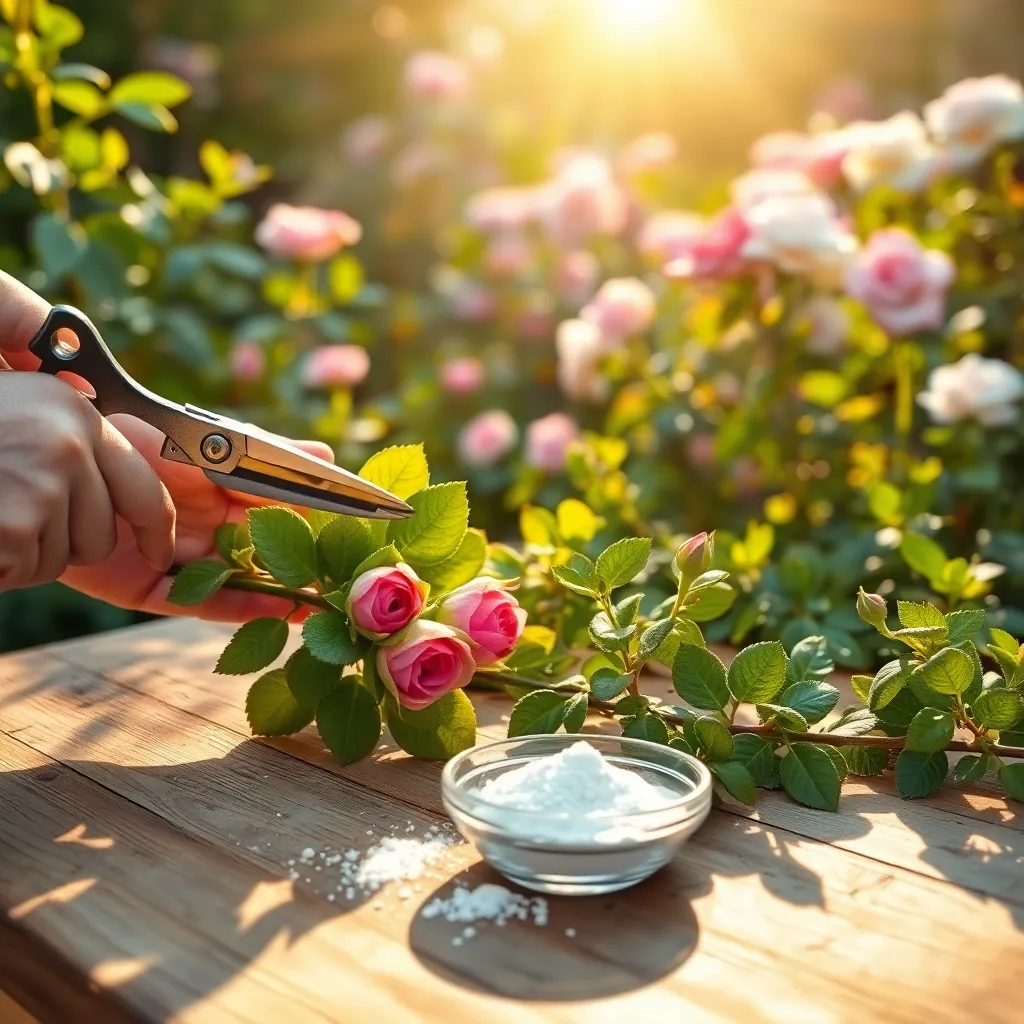
After preparing the planting medium, it’s time to focus on the rose cuttings themselves. Begin by selecting healthy stems that are about 6 to 8 inches long, ensuring they have at least three nodes.
Once you’ve chosen your cuttings, use a sharp, sterilized knife or pruning shears to make a clean cut just below a node. This node is crucial as it contains the cells necessary for root development, making it the ideal point for new growth.
Next, remove any leaves from the bottom half of the cutting to reduce moisture loss and prevent rot. Retain a few leaves at the top to allow for photosynthesis, which is vital for the cutting’s energy supply.
Now, dip the cutting’s base into a rooting hormone powder or gel, which can significantly speed up root development. Ensure you coat the bottom inch completely, then gently tap off any excess powder.
Rooting hormones can be found at most garden centers and come in different forms such as powder, liquid, or gel. These products contain plant hormones like auxins that stimulate root growth, giving your rose cuttings a better chance to thrive.
For advanced gardeners, experimenting with different hormone concentrations can provide insights into optimal rooting conditions. Remember, patience is key—roots can take several weeks to develop, so maintain a consistent environment for the best results.
Plant Cuttings in Containers
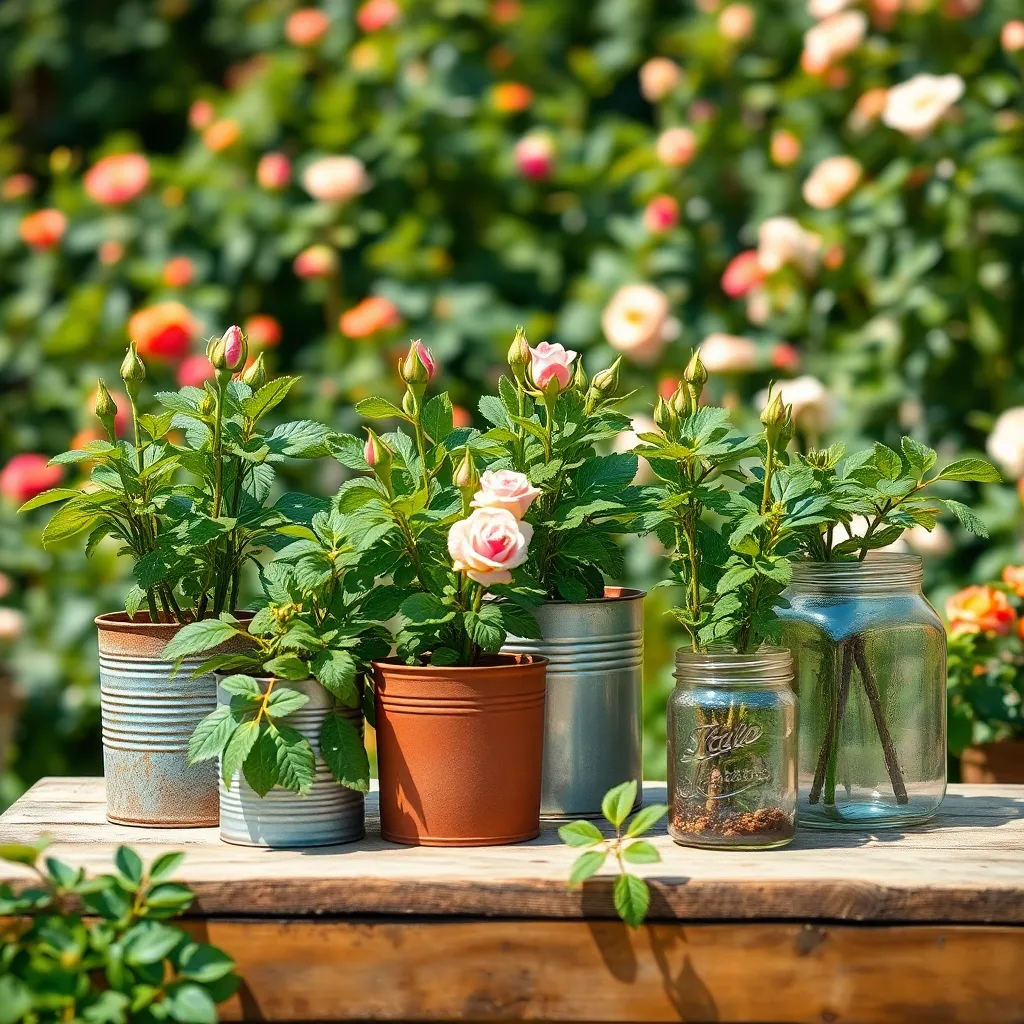
Once your rose cuttings are prepared with rooting hormone, it’s time to plant them in containers. Selecting the right container is crucial, and it should be at least 6 inches deep to allow root development. Fill the container with a well-draining potting mix; consider using a blend of peat, perlite, and vermiculite to maintain moisture while preventing waterlogging.
Moisture management is key to successful rooting. Water the potting mix thoroughly after planting the cuttings to ensure good soil contact, but be careful not to overwater, as this can lead to rot. Position the containers in a spot with bright, indirect light to encourage growth without scorching the tender cuttings.
Regular care is essential during the rooting process. Check the moisture level every few days, and water lightly if the top inch of soil feels dry to the touch. For those looking to optimize growth, consider covering the container with a clear plastic bag to create a mini greenhouse effect, which helps maintain humidity and warmth.
As roots begin to develop, usually within four to six weeks, you’ll notice new growth on your cuttings, which is a positive sign. Gently tug on the cuttings to check for resistance, indicating root formation. Once established, gradually acclimate the plants to outdoor conditions before transplanting them into your garden.
Maintain Moisture and Monitor Growth
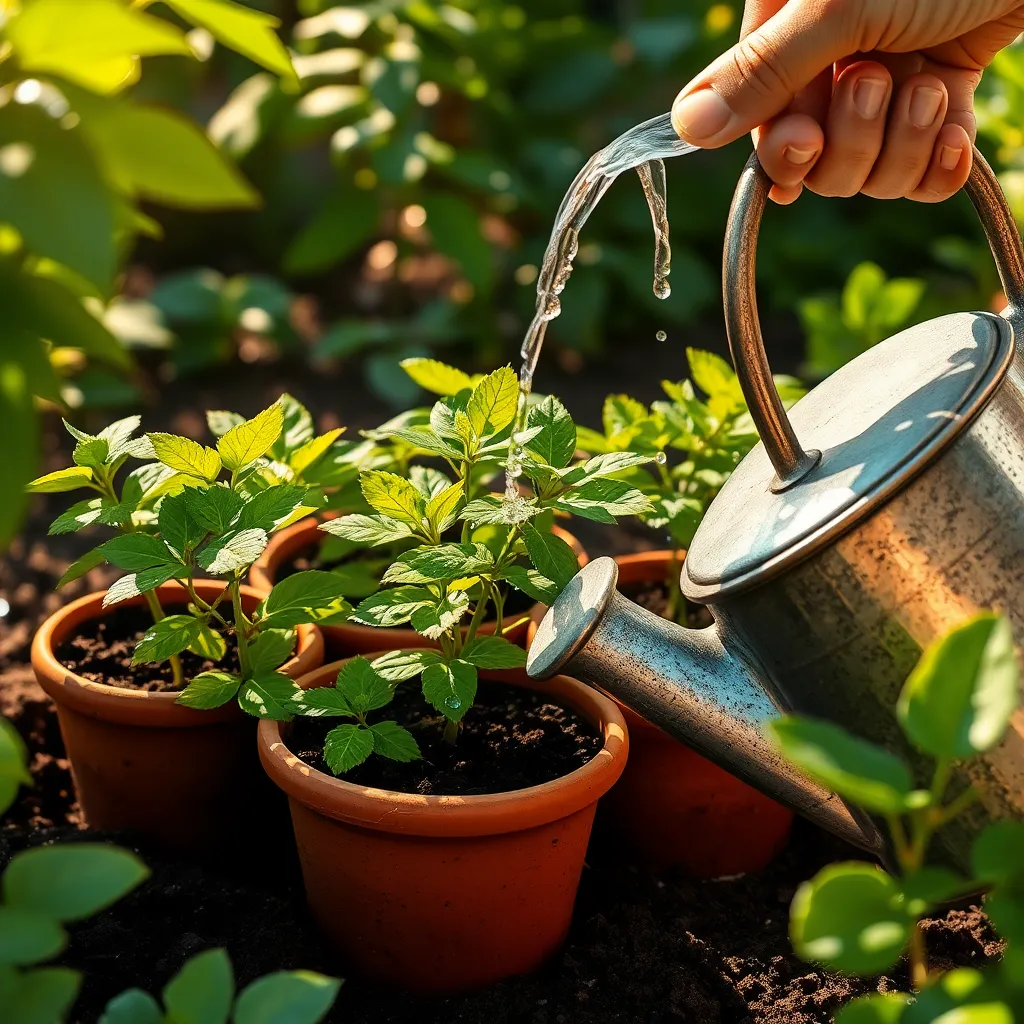
Ensuring your rose cuttings maintain adequate moisture is crucial for successful rooting. Check the soil moisture daily by sticking your finger about an inch into the soil; it should feel slightly damp but not waterlogged.
Use a misting bottle to gently spray the foliage every morning, keeping humidity levels high around the plant. This practice is especially important if you’re growing your cuttings indoors, where air can be drier.
For beginners, placing a clear plastic bag or dome over the container can help retain moisture and create a mini greenhouse effect. Make sure the cover does not touch the leaves, and occasionally lift it to allow fresh air to circulate.
As your rose cuttings begin to root, monitoring their growth becomes essential. Look for signs of new leaf development, which indicates that roots are forming beneath the soil.
It’s important to note any yellowing or wilting of the leaves, which could suggest overwatering or inadequate drainage. Adjust your watering schedule and check that your container has sufficient drainage holes to rectify these issues.
Advanced gardeners may wish to use a rooting hormone to accelerate growth and improve the success rate of cuttings. Simply follow the product instructions closely for best results, and always use a clean, sharp tool for cutting to prevent disease.
Conclusion: Growing Success with These Plants
In the journey of nurturing relationships, much like growing roses from cuttings, patience, care, and understanding are essential. We’ve explored five key concepts: the importance of a solid foundation, the nurturing of daily communication, the significance of acts of kindness, the role of trust and honesty, and the art of forgiveness. Each of these elements, when cultivated with love and attention, can help your relationships bloom beautifully.
As an actionable next step, take a moment today to express genuine appreciation to someone you care about. A simple gesture or heartfelt message can reinforce your connection and set the stage for deeper, more meaningful interactions.
Remember, relationships, like gardens, thrive when nurtured consistently. Bookmark this article as a resource to revisit these principles and keep your relationship skills blossoming. As you continue to apply these insights, envision a future where your relationships flourish, strengthened by the very foundations you’ve so diligently built.
With commitment and love, you have the power to cultivate relationships that are as enduring and beautiful as a garden of roses. Save this article for those moments when you need a reminder of the nurturing path to relational success.

